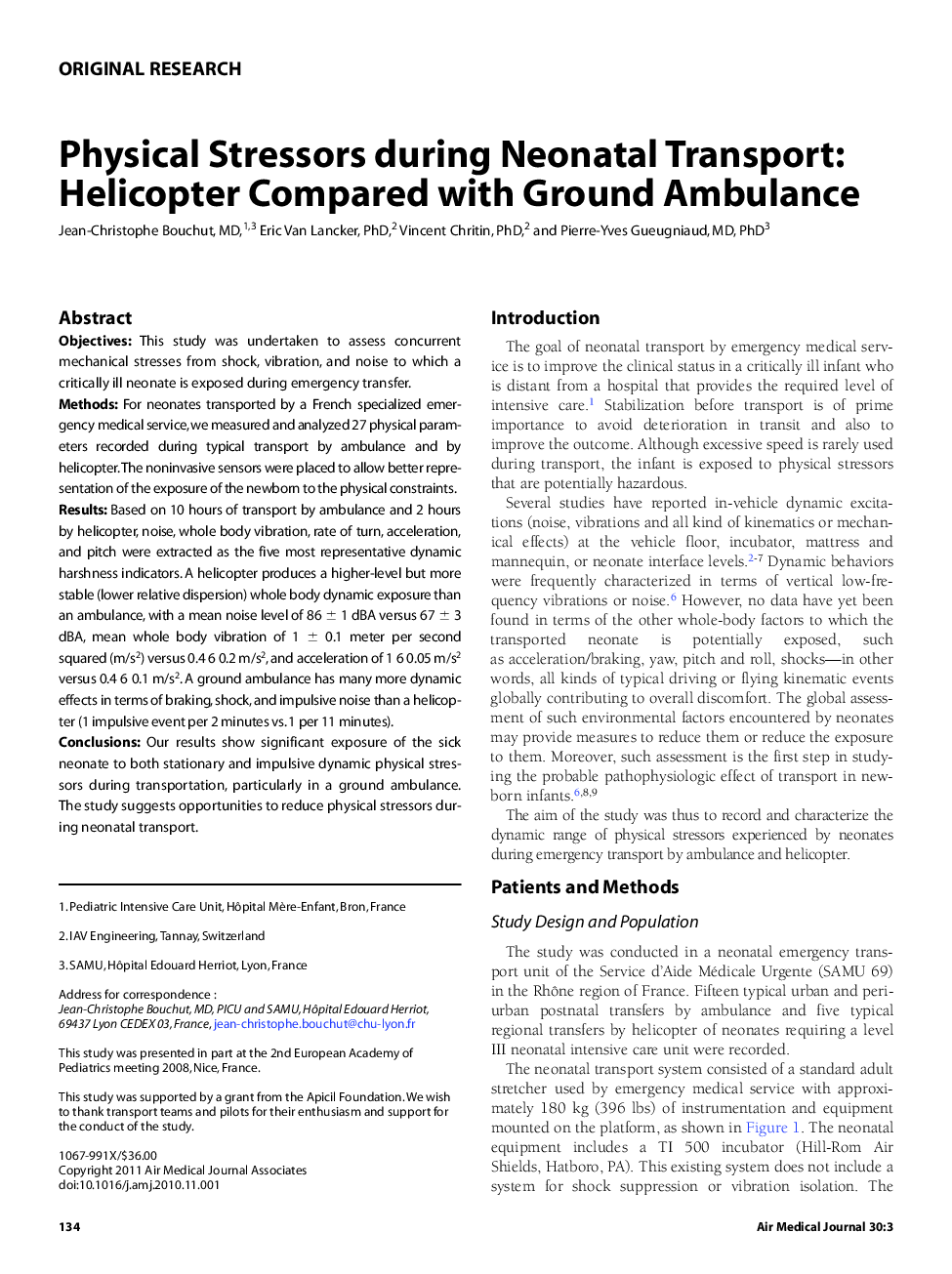| کد مقاله | کد نشریه | سال انتشار | مقاله انگلیسی | نسخه تمام متن |
|---|---|---|---|---|
| 2605024 | 1134061 | 2011 | 6 صفحه PDF | دانلود رایگان |

ObjectivesThis study was undertaken to assess concurrent mechanical stresses from shock, vibration, and noise to which a critically ill neonate is exposed during emergency transfer.MethodsFor neonates transported by a French specialized emergency medical service, we measured and analyzed 27 physical parameters recorded during typical transport by ambulance and by helicopter. The noninvasive sensors were placed to allow better representation of the exposure of the newborn to the physical constraints.ResultsBased on 10 hours of transport by ambulance and 2 hours by helicopter, noise, whole body vibration, rate of turn, acceleration, and pitch were extracted as the five most representative dynamic harshness indicators. A helicopter produces a higher-level but more stable (lower relative dispersion) whole body dynamic exposure than an ambulance, with a mean noise level of 86 ± 1 dBA versus 67 ± 3 dBA, mean whole body vibration of 1 ± 0.1 meter per second squared (m/s2) versus 0.4 6 0.2 m/s2, and acceleration of 1 6 0.05 m/s2 versus 0.4 6 0.1 m/s2. A ground ambulance has many more dynamic effects in terms of braking, shock, and impulsive noise than a helicopter (1 impulsive event per 2 minutes vs. 1 per 11 minutes).ConclusionsOur results show significant exposure of the sick neonate to both stationary and impulsive dynamic physical stressors during transportation, particularly in a ground ambulance. The study suggests opportunities to reduce physical stressors during neonatal transport.
Journal: Air Medical Journal - Volume 30, Issue 3, May–June 2011, Pages 134–139